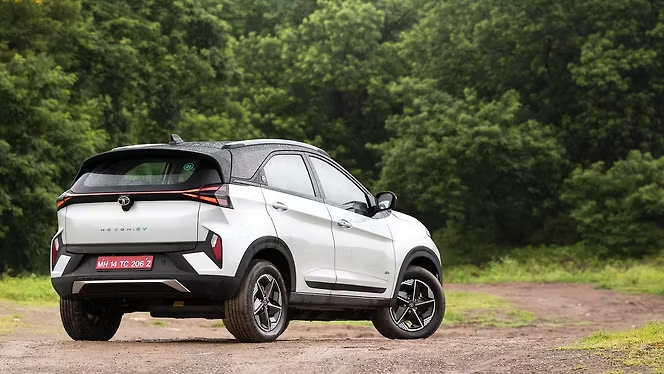The auto industry is undergoing a seismic shift, with electric vehicles (EVs) now accounting for 14% of global car sales in 2023, according to the International Energy Agency (IEA). This figure marks a significant leap from just 4% in 2020. As we navigate this era of transformation, the age-old debate of EVs vs. hybrids vs. gas cars takes on new dimensions. In this article, we’ll explore how these three categories stack up in 2023, diving into the latest advancements, challenges, and market trends. Whether you’re an eco-conscious driver, a technology enthusiast, or just exploring your next vehicle purchase, this guide will provide valuable insights into the evolving automotive landscape.
The Rise of Electric Vehicles (EVs)
Technological Advancements in EVs
EVs have seen remarkable technological advancements, catalyzing their adoption worldwide. In 2023, the focus is on battery technology, with companies like Tesla and BYD leading the charge. Solid-state batteries, promising higher energy densities and faster charging times, are on the horizon, with Toyota aiming for commercial production by 2025. This innovation could extend EV range to over 400 miles on a single charge, making range anxiety a thing of the past.
- Battery Life: New chemistries like lithium iron phosphate (LFP) offer more charging cycles, reducing long-term costs.
- Charging Infrastructure: Global investments have beefed up charging networks, with Europe adding over 300,000 new public chargers in 2023 alone.
Market Trends and Consumer Preferences
The demand for EVs is skyrocketing, driven by environmental concerns and government incentives. Bloomberg Green reports that countries like Norway and the Netherlands are leading with over 80% of new car sales being electric. The U.S. is catching up, with California mandating that all new cars sold by 2035 must be zero-emission vehicles.
Hybrids: The Bridge Technology
Understanding Hybrid Technology
Hybrids combine the best of both worlds by using a conventional internal combustion engine (ICE) alongside an electric motor. This dual-system enhances fuel efficiency and reduces emissions without the need for extensive charging infrastructure.
- Plug-in Hybrids (PHEVs): Offer a larger battery and can be charged externally, allowing for short trips on electric power alone.
- Traditional Hybrids: Function without external charging, relying on regenerative braking to recharge the battery.
Are Hybrids Still Relevant?
While hybrids served as a crucial transitional technology, their relevance is being questioned as EV infrastructure expands. However, they remain popular due to their versatility and lower upfront cost compared to full EVs. In regions with limited charging facilities, hybrids still offer a practical solution, bridging the gap as infrastructure catches up.
Gas Cars: Declining but Not Obsolete
The Current State of Gasoline Vehicles
Despite the surge in EV popularity, gasoline-powered cars still dominate the global market. They remain the go-to choice in regions with underdeveloped charging networks and where fuel prices are relatively low. However, with stricter emission regulations and increasing fuel costs, their market share is dwindling.
- Efficiency Improvements: Automakers are investing in more efficient ICE technologies to reduce emissions and improve fuel economy.
- Regulatory Pressure: Countries like the UK plan to ban the sale of new petrol and diesel cars by 2030, pushing manufacturers to innovate or phase out these models.
Where Do Gas Cars Fit in 2023?
Gas cars still offer unmatched range and convenience for long-distance travel in areas lacking EV charging infrastructure. They remain a viable option for those who prioritize upfront costs and immediate refueling over long-term savings and environmental impact.
Practical Tips for Choosing Your Next Vehicle
How to Decide: EV, Hybrid, or Gas?
Choosing the right vehicle depends on your lifestyle, budget, and environmental priorities. Here’s a quick guide to help you decide:
- Assess Your Driving Habits:
– Frequent Long Trips: Consider hybrids or gas cars for better range.
– City Driving: EVs excel in urban settings with ample charging points.
- Evaluate Charging Access:
– Home Charging Availability: If you can install a charger at home, an EV might be right for you.
– Local Infrastructure: Check for public chargers in your area.
- Budget Considerations:
– Upfront Costs: Gas cars often have lower purchase prices but higher running costs over time.
– Incentives: Look for government subsidies on EVs and hybrids that can offset initial expenses.
- Environmental Impact:
– Sustainability Goals: If reducing your carbon footprint is a priority, EVs lead the pack.
Where to Buy and What to Compare
- EV Models to Consider: Tesla Model 3, Rivian R1T, Mustang Mach-E
- Top Hybrids: Toyota Prius, Hyundai Ioniq, Honda Accord Hybrid
- Best Gas Cars: Ford F-150, Toyota Corolla, Honda Civic
When purchasing, compare factors like total cost of ownership, maintenance, and insurance rates. Websites like AutoTrader and Edmunds offer comprehensive reviews and tools to help you make an informed choice.
Conclusion: The Road Ahead
In 2023, the choice between EVs, hybrids, and gas cars is more nuanced than ever. The rapid advancements in EV technology and infrastructure are making electric cars increasingly appealing, while hybrids continue to offer a balanced solution for many drivers. Gasoline vehicles, though declining, still cater to specific needs and remain part of the automotive landscape.
As we look to the future, the shift towards sustainable transportation is clear. For those considering a new vehicle, weighing the pros and cons of each option will be crucial in making a decision that aligns with both personal needs and global trends. What are your thoughts on the future of transportation? Share your opinion in the comments below!

